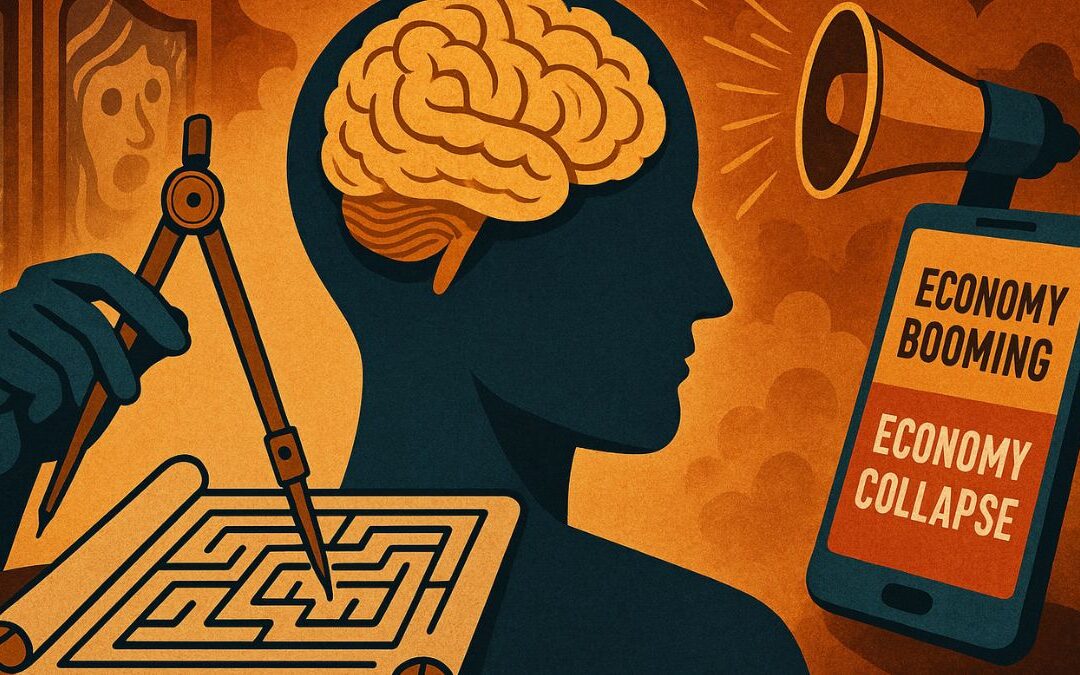The Gist
Why Balance Matters
In storytelling, dialogue and description are two powerful tools that serve different purposes. Dialogue lets readers hear directly from the characters, bringing them to life and revealing their personalities, motivations, and relationships. Description, on the other hand, sets the scene, offers insights into characters’ emotions, and builds the world around them. Striking a balance between these elements is crucial because it creates a rhythm that keeps readers engaged without overwhelming them with too much conversation or excessive detail.
When dialogue and description are balanced well, readers feel grounded in the story and connected to the characters. They can imagine the setting and understand the mood, all while following the plot and character dynamics. A good balance lets readers “see” and “hear” the story unfold naturally, enhancing both the pace and emotional depth.
When to Use Dialogue
Dialogue is a fantastic way to reveal character dynamics, share information, and move the plot forward without lengthy explanations. Good dialogue often serves multiple purposes, delivering details while also capturing a character’s unique voice. For example, instead of describing a character’s feelings, you might let them express it through their words, showing their personality and emotions at the same time.
Consider a scene where a character is nervous about a job interview. Instead of stating outright that they’re anxious, you could have them say, “I can’t believe I’m sweating this much—and I haven’t even left the house!” Dialogue like this shows their nerves in a relatable, natural way without needing additional explanation.
However, relying solely on dialogue can make the scene feel empty, leaving readers without enough context or emotional weight. That’s where description comes in to support and enhance what the characters are saying.
When to Use Description
Description is invaluable for setting the scene and building atmosphere. It offers readers a sense of place, tone, and mood, helping them feel like they’re truly in the story’s world. Description also lets writers explore characters’ internal thoughts, giving insight into their emotions and perspectives.
For instance, if your character is walking through a crowded city, the description can bring the surroundings to life: “The streets buzzed with the hum of traffic and snippets of hurried conversations. Neon signs flickered above, casting a glow that made every shadow seem sharper.” Descriptive lines like these create a visual and sensory experience for the reader, helping them feel more connected to the scene.
But description shouldn’t overload the narrative. Long passages of description can slow down the pacing, pulling readers out of the moment. To keep things engaging, consider breaking up description with snippets of dialogue or action, allowing readers to stay immersed in the story’s flow.
How to Blend Dialogue and Description Seamlessly
Now that we understand the individual roles of dialogue and description, let’s look at how to combine them effectively. Blending these elements allows you to shape scenes that feel balanced, where action, mood, and character interaction all work together.
1. Use Dialogue to Enhance Description
One effective way to blend dialogue and description is by using dialogue to add to the atmosphere of a scene. For example, instead of describing every detail of a setting right away, let the characters’ reactions to the place convey some of that information.
Consider a character entering an abandoned house. Rather than describing every eerie aspect, you might use dialogue like, “Did you hear that? This place gives me the creeps.” By incorporating dialogue, you show the character’s reaction to the setting while hinting at the mood, keeping readers interested without needing lengthy descriptions.
2. Break Up Description with Dialogue
If you’re working with a scene that requires more description, like introducing a new location, breaking it up with dialogue can keep the pace moving. Let’s say your characters arrive in a bustling marketplace. Start with a few descriptive lines—“Stalls overflowed with spices, bright fabrics, and handcrafted goods, the air thick with the scent of grilled meats”—and then add dialogue like, “I’ve never seen so many colors in one place!” This approach maintains the setting’s vividness while keeping readers engaged through interaction.
3. Reveal Character Thoughts with Descriptive Interludes
Description can be especially effective in revealing a character’s inner thoughts and emotions between lines of dialogue. This technique is known as interior monologue, where you give readers a peek into the character’s mind.
For example, if two characters are in a tense argument, you can break up the dialogue with descriptions of one character’s thoughts:
“‘You never listen to me,’ he said, folding his arms tightly. She opened her mouth to respond, but hesitated, feeling the familiar lump of frustration rise in her throat. Why was every conversation like this?”
By mixing internal thoughts with dialogue, you give readers a deeper understanding of the character’s emotions, creating a more layered scene.
Finding Your Unique Balance
Every writer has a different style when it comes to balancing dialogue and description. Some may prefer dialogue-heavy scenes that rely on character interactions to convey emotion, while others lean toward rich, detailed descriptions that paint a vivid picture of the world. The key is finding a balance that suits your story and enhances the reader’s experience.
As you practice, pay attention to the pacing of your scenes. Are there places where dialogue alone feels too sparse? Could a bit of description add to the tension or mood? Likewise, if your description is slowing things down, think about whether dialogue could bring more immediacy to the scene. Reading your work aloud or having someone else read it can also help you spot these imbalances, allowing you to adjust as needed.
Practical Tips for Balancing Dialogue and Description
- Consider the Pacing: Use shorter dialogue exchanges to pick up the pace in intense scenes, and add more descriptive lines to create a reflective or atmospheric mood.
- Stay in the Scene: Avoid long, disconnected blocks of dialogue or description. Instead, aim for a seamless flow where each element supports the other.
- Use Body Language: Describing gestures, facial expressions, or small actions can replace dialogue tags like “he said” or “she replied,” keeping the scene active and descriptive.
- Experiment with Styles: Try writing the same scene twice—once with more dialogue, once with more description. See which version feels stronger and why.
- Be Selective: Remember that you don’t need to describe everything. Choose the most important details to help your reader visualize the scene without slowing the story.
Making Dialogue and Description Work Together
Balancing dialogue and description is an art that takes practice, but it’s a skill worth developing. When used effectively, dialogue and description work together to build dynamic scenes that pull readers in and make them feel part of the story. By paying attention to the needs of each scene, experimenting with different techniques, and finding your own rhythm, you’ll be able to craft stories that resonate with readers and leave a lasting impression. So next time you sit down to write, remember: a great story isn’t just about what your characters say—it’s also about the world they live in.
Let’s Talk
Let’s dive deeper into this balance between dialogue and description, shall we? It’s such a delicate dance! Too much of one, and the story feels either too empty or too dense. Have you ever written a scene where the characters just keep talking, but after a while, it feels like they’re floating in a void? Or maybe the opposite—where the description is so detailed that it feels like the characters are buried under layers of scenery? Striking that perfect balance can feel like a juggling act, but it’s definitely doable with some practice.
I think of dialogue as the heartbeat of a story. It’s where characters reveal who they are, not just in what they say, but in how they say it. You can tell so much about a character by the way they react in conversation. Picture this: two characters sitting across from each other in a quiet cafe. One is venting about a bad day, while the other is just nodding, saying, “Uh-huh, I get it.” In a case like this, that minimal response tells us so much without any lengthy description. But imagine adding in a little bit of description—maybe a line about how the listener’s gaze keeps darting to their watch. Now you’re building tension without a single word of direct conflict.
And then there’s description, the thing that makes your world feel alive. Description is like the background music in a movie. It sets the mood, gives us context, and lets us see beyond the dialogue. The trick is to give just enough to paint the picture without turning it into a landscape painting. I used to get caught up in describing every little detail. “The wind was blowing just so, the leaves were exactly this shade of green…” and so on. But honestly, readers don’t need all that—they just need enough to feel the scene. How do you decide what details to keep and what to leave out? Sometimes I ask myself: “Is this adding to the story’s emotion or just filling space?”
A practical trick I’ve found helpful is to use description to break up dialogue in emotionally charged scenes. Let’s say two characters are arguing. Instead of a back-and-forth that could start to feel like a tennis match, throw in a bit of description: “She clenched her fists so tightly her knuckles turned white.” Suddenly, the emotion is magnified, and the reader can almost feel the tension. It’s these small moments of description that make dialogue pop without overloading the scene.
And here’s something I’ve noticed about blending these elements—sometimes it’s the little actions, like a raised eyebrow or a quick glance, that speak louder than words. Have you ever read a scene where someone says “I’m fine,” but their body language is practically screaming the opposite? A simple line like, “He looked away, jaw clenched, and muttered, ‘I’m fine,’” can add layers to a character’s dialogue without spelling it out.
So, what about you? When you’re writing, do you feel you lean more toward dialogue or description? Or maybe, like me, you find yourself adjusting depending on the type of scene?
Let’s Learn Vocabulary in Context
Let’s break down some useful vocabulary from our discussion on balancing dialogue and description. These words aren’t just for writers—they’re great for talking about interactions, settings, and mood in all kinds of situations.
First up, dialogue. Dialogue is simply a conversation between two or more people, whether in real life or in writing. In storytelling, dialogue gives characters a voice and shows relationships. You might hear, “Let’s open a dialogue about this project,” meaning let’s start a conversation.
Next is description. Description involves explaining what something looks, feels, or sounds like, helping readers visualize a scene. We use description all the time, like when we’re telling someone about our day: “The restaurant had cozy lighting and a warm atmosphere.”
Balance is the art of keeping things even or stable. In writing, it’s balancing dialogue with description; in life, it could mean balancing work and rest. You might say, “I’m trying to find a balance between my job and hobbies,” meaning you’re aiming for equal time and attention for both.
Pacing refers to the speed at which a story unfolds. Good pacing keeps readers engaged by moving scenes along at the right speed. In daily life, pacing might refer to how fast you approach tasks: “I’m pacing myself with this project so I don’t get overwhelmed.”
Then there’s mood, which is the atmosphere or feeling a scene creates. In stories, mood can be light and cheerful or dark and tense. We use mood in real life too, like “The mood at the party was so lively!” meaning it felt energetic and happy.
Tension is a sense of suspense or strain, often building up to something important. In scenes, tension keeps readers on edge, wanting to know what happens next. In life, tension can come up in difficult situations: “There was tension in the meeting after the disagreement,” meaning things felt uncomfortable or strained.
Character dynamics is a phrase that describes the relationships and interactions between characters. In a family or friend group, we might say “dynamics” to describe how people get along. For example, “The team dynamics are strong—they work well together.”
Setting is where a story or scene takes place. In writing, the setting helps readers imagine the world of the characters. Outside of stories, we use setting to talk about places and surroundings: “The setting for the event was perfect—it was outdoors with beautiful scenery.”
Voice refers to the unique way a character or person speaks. In writing, each character’s voice shows their personality. In real life, voice can mean the specific way someone expresses themselves: “Her voice always sounds so enthusiastic—it’s contagious!”
Finally, there’s layered. When a scene is described as layered, it means it has depth, with multiple elements working together. In real life, we might use layered to describe a complex conversation: “That was a layered discussion—there were so many different viewpoints.”
Here are a couple of questions: How do you use description to set the mood in your daily conversations? And do you think there’s a balance between dialogue and description that makes a story feel more real?











0 Comments